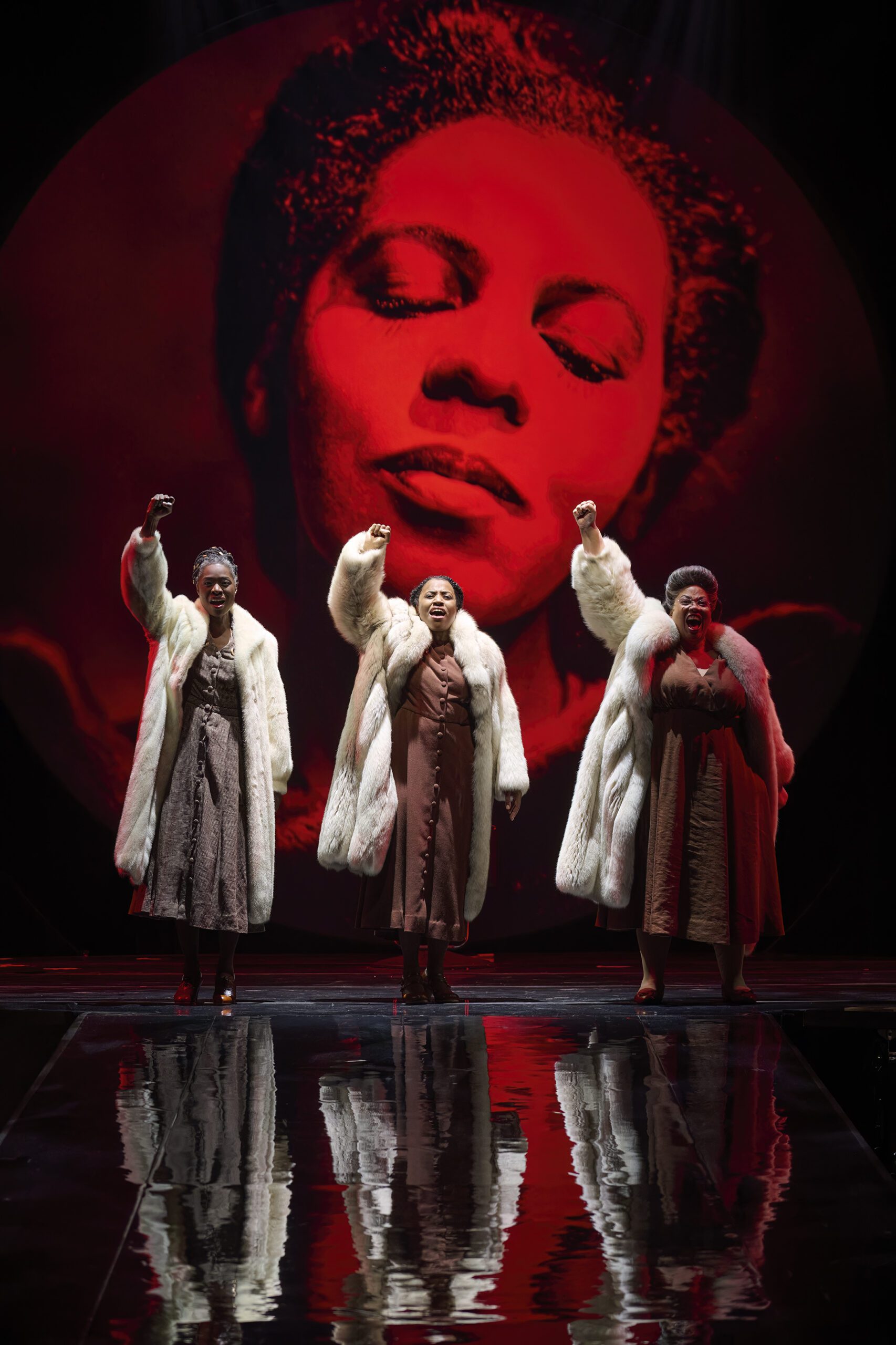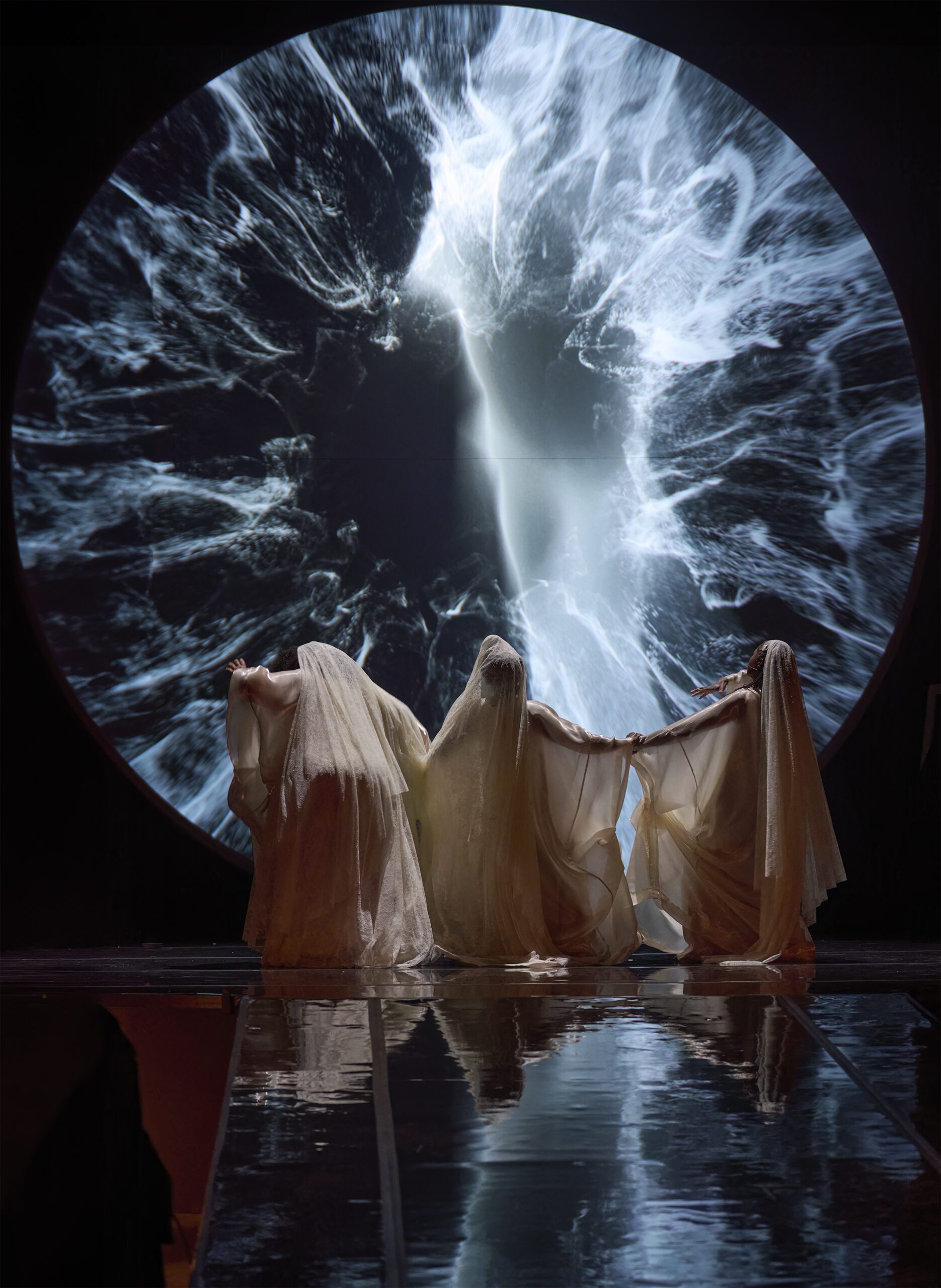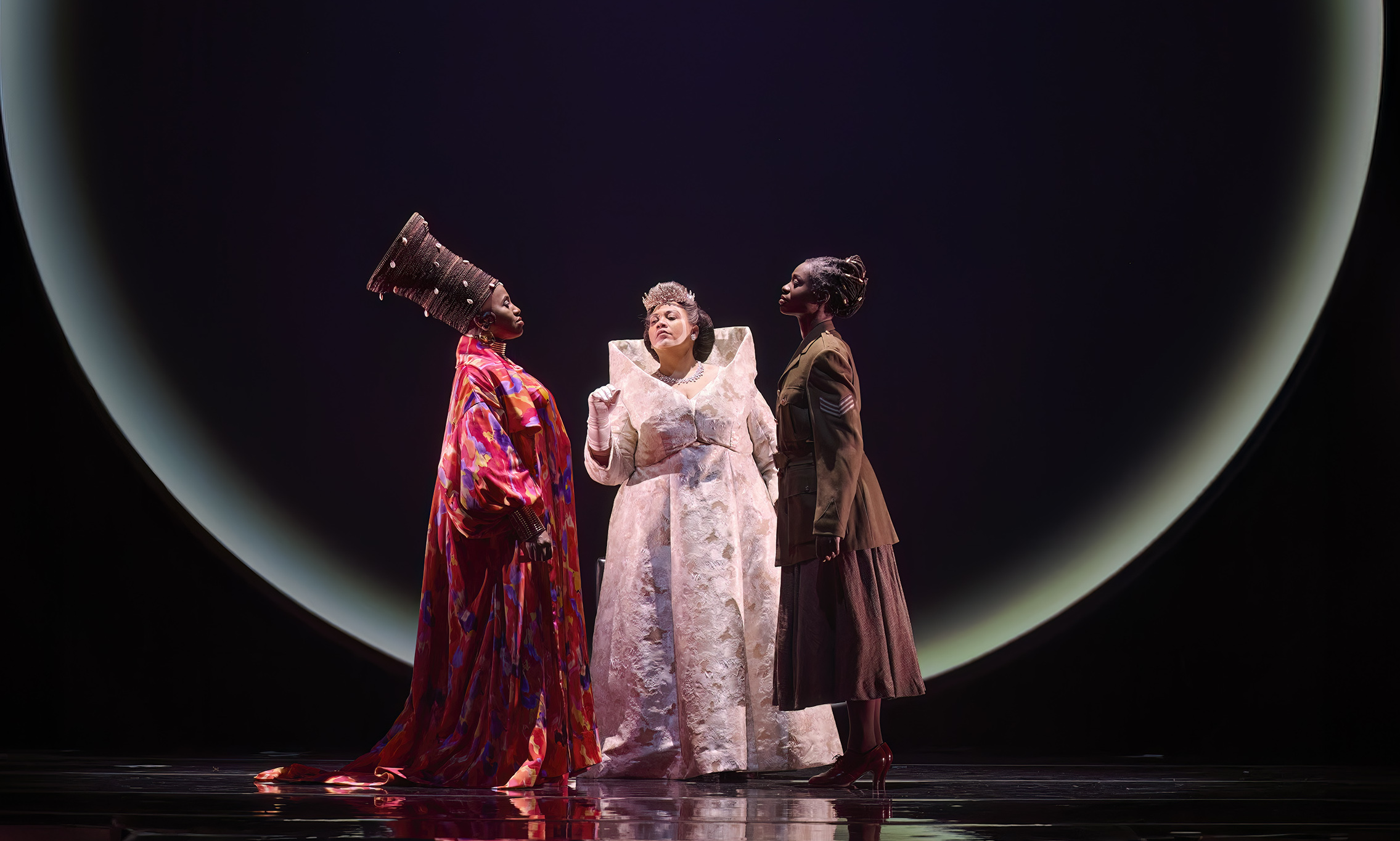In Black Opera: History, Power, Engagement, Naomi André writes of the “shadow culture” of Black opera as something that has existed for a long time, but been kept to the margins – kept “upstage.” In the past century, more opera has brought “black perspectives and experiences downstage in our narrative of how the story is told and who is telling and interpreting the story.”
It’s been a feature of contemporary opera since the late 1960s to stage biopic-style dramas about significant recent historical or celebrity figures, from Einstein, Louis Riel and Oppenheimer to Anna Nicole Smith and Patty Hearst – and biopics have loomed large in recent cinema, too. In the US, operas like Anthony Davis’s X: The Life and Times of Malcolm X (in its recent high- profile revivals), his Pulitzer Prize-winning The Central Park Five, and Terence Blanchard’s Fire Shut Up In My Bones and Champion have brought more stories about Black lives “downstage,” charting the lives of significant figures and events in the past century of Black history.
Making its world premiere at the COC, Aportia Chryptych does this important work, too, but its creators (director, librettist, and co-composer HAUI and composer and conductor Sean Mayes) are keen to emphasize that it is very much not a biopic. The opera does bring the wonderfully rich life of the Nova Scotian singer to the spotlight – if you go in knowing nothing about Portia White, you’ll certainly come out knowing a lot more, but this is no straightforward narration, nor is it an operatic gloss of a Wikipedia page. Weaving together strands of imagined and real history, the drama is also speculative: “The lines between fact and fiction are nuanced and complex,” the program reminds us. Though flashes of chronological time are established, loosely moving through childhood, adulthood and White’s later career, temporality is unmoored, untethered from linear narrative. What emerges is a tapestry of imagined memories filtered through the fracturing of her body, spirit, and soul as they try to achieve peace, represented by Neema Bickersteth, Adrienne Danrich, and SATE respectively.

Photo Credit: Michael Cooper
Aportia Chryptych: A Black Opera for Portia White Canadian Opera Company
It’s a form of storytelling that imagines and muses as it fills in gaps and elaborates, from passages in White’s childhood to her meeting with Marianne Anderson, to what her reaction might have been to the assassination of Martin Luther King Jr., just two months after the contralto’s own passing in February 1968. Poet George Elliott Clarke (White’s great-nephew), writes in Portia White: A Portrait in Words of “prisms of chromatic flux” in telling her story. There is no obligation to proceed matter-of-factly through an encyclopedia of White’s life and accomplishments, past/present/future instead colliding as it is surveyed from a realm beyond:
“So, Portia may witness
Early on what should happen late,
For, dead, she lives in timeless state” (Clarke)
Laura Warren’s projections work neatly in the large circle to draw focus to key interpretations – the giant orb might become a literal mind’s eye, or a swirling cosmos – and to ensure the real Portia herself (and her family) are given their due. They offer an effective visual frame for the dramatic format that blends memory, imagination and history. Diséiye Thompson’s costumes similarly work to foreground the creative vision, with period costumes offering some measure of historical fixity while white flowering robes and dresses elevate the three Portias to mystical status.
The score is at its most affecting in three modes: first, the three Portias singing together, sometimes weaving sinuously liberated contrapuntal lines around each other, settling into an instinctive equilibrium and at other times rhythmically aligned, hymn-like; second, in the eruptions of raw orchestral power, particularly when the rich percussion section is set loose; and third, in passages of lush, almost neo-Romantic lyricism, often accompanying arrangements of spirituals. Here, the latter function rather like arias, stepping out from moments of the “action” – dialogue, acting out of scenes in Portia’s life – for a period of repose and reflection. Spirituality and faith are elastic concepts throughout, urging towards the philosophical—the stage space is, in Warren’s design, intended to represent the bardo, the state of existence between death and rebirth in Buddhism.
At other moments, the score is infused with an infectious energy: passages of jazzy trio for saxophone, double bass, and drums, poignant guitar solos, electronic-infused vocalizations and moments of rap and R&B all meld together in a vibrant, fluid palette. When it works, it’s a treat to have contemporary composers conduct their own music, and Mayes’s enthusiasm and precision carries the ensemble through sometimes tricky negotiations between different styles.

Photo Credit: Michael Cooper
Aportia Chryptych: A Black Opera for Portia White Canadian Opera Company
Shifts between different modes of singing and narrative delivery sometimes felt a little stop- start, and periods of (spoken and sung) dialogue were occasionally somewhat stilted in construction. It also got a little difficult to keep track of the roles, as the three singers shift fluidly between their “Portia” roles and other figures, such as her parents, teachers, friends. But the storming performances of the three principals keep the momentum up right the way through. While I challenge anyone not to be overcome with full-body chills when the three of them sing together (I’m still reliving mentally, days later, their final rendition of “Think on me,” a song supposedly penned by Mary Queen of Scots as she awaited execution, which White was well-known for performing), they shine equally as soloists. Danrich (Portia Spirit) blows us away, the sheer force and richness of her voice bursting through the walls of the smaller Front Street theatre. Bickersteth’s elastic, strong, but always mellifluous voice is equally suited to lively moments as well of those of quiet tenderness, while SATE brings endlessly varied vocal expressivity.
Aportia Chryptych is an exciting testament to the wealth of innovative creativity alive in our local contemporary opera, particularly that which brings together artists from a range of different creative backgrounds, and that which showcases more diverse voices. There’s appetite here for some of the wealth of contemporary opera alive in the US at the moment to be brought to Toronto, but also for works like Aportia that reflect Canadian history. Upcoming premieres in the next few years that highlight Indigenous opera creators and stories will also energize the scene.
Both Aportia and the COC’s end-of-season contemporary premiere last year, Pomegranate, drew sold-out audiences. There is a demonstrable appeal, both for older works getting long- overdue attention (the great success of the new version of Scott Joplin’s Treemonisha as part of the 2023 Luminato Festival, for example), and for new pieces. We – and Aportia – deserve more than three performances, and hopefully this success will yield just that, as many legacies continue to be celebrated and witnessed through operatic retellings.
Related Content ↘
Opera Canada depends on the generous contributions of its supporters to bring readers outstanding, in-depth coverage of opera in Canada and beyond. Please consider subscribing or donating today.











